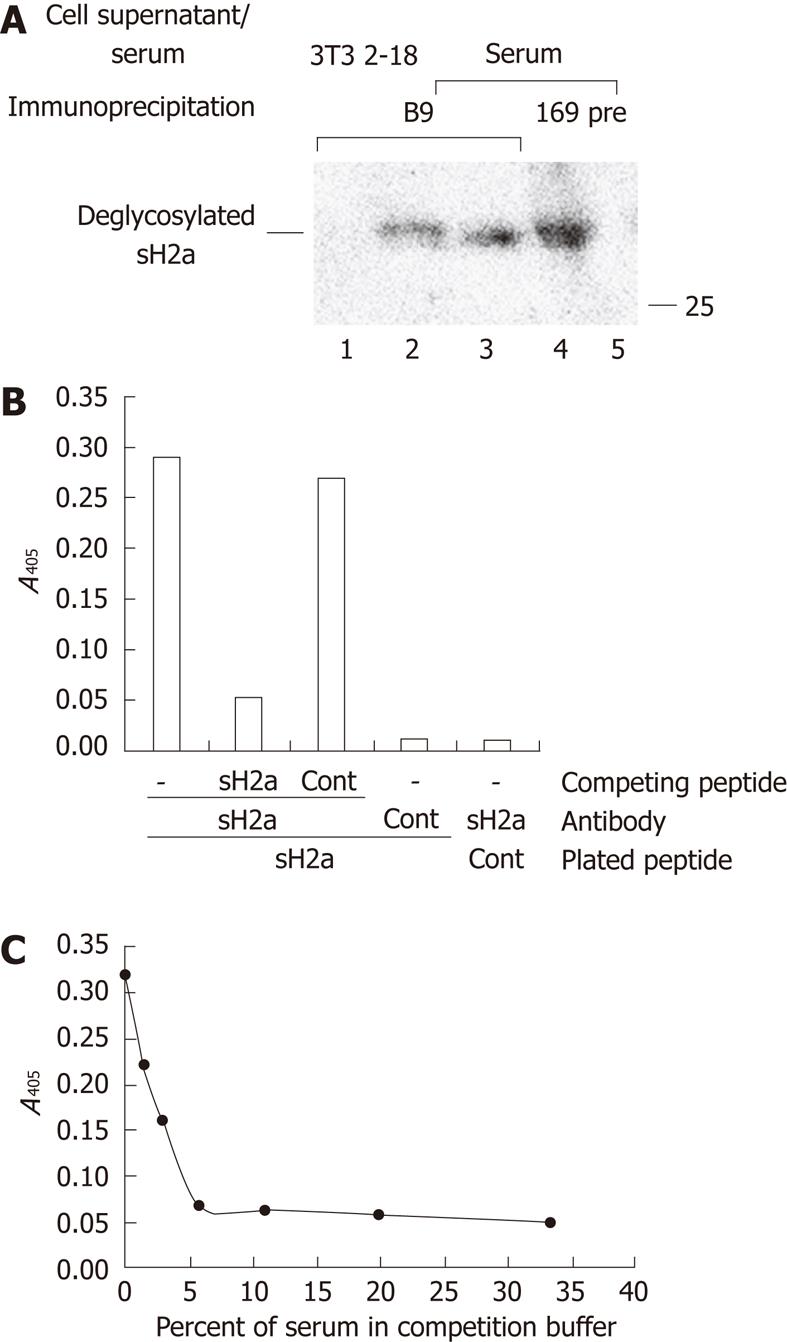Copyright
©2011 Baishideng Publishing Group Co.
World J Gastroenterol. Dec 28, 2011; 17(48): 5305-5309
Published online Dec 28, 2011. doi: 10.3748/wjg.v17.i48.5305
Published online Dec 28, 2011. doi: 10.3748/wjg.v17.i48.5305
Figure 3 Monoclonal antibody and enzyme-linked immunosorbent assay for detection of sH2a in human sera.
A: Medium from two 90 mm dishes of control NIH 3T3 cells (lane 1) or of the same cells stably expressing sH2a (2-18 cell line, lane 2) or 0.5 mL of normal human serum (lanes 3-5) were immunoprecipitated with B9 monoclonal antibody (lanes 1-3), or with a mixture of polyclonal anti-H2a 169 and anti-carboxyterminal antibodies (lane 4) or with control preimmune rabbit serum (lane 5). All immunoprecipitates were treated with N-glycosidase-F and analyzed as in Figure 2C. Shown is an immunoblot representative of three repeat experiments; B: Competitive enzyme-linked immunosorbent assay (ELISA) was performed as described in Materials and Methods, binding the anti-sH2a monoclonal B9 antibody (sH2a) or a control antibody (cont) to the specific sH2a or control (cont) peptides plated on a 96 well plate, after competition with the same sH2a or control peptides (0.5 μg/mL). Values are averages of quadruplicates; C: A similar ELISA assay was done with the B9 antibody and plating the sH2a peptide, but competing the antibody with different dilutions of human serum from a healthy individual (indicated as percent serum of the total volume).
- Citation: Benyair R, Kondratyev M, Veselkin E, Tolchinsky S, Shenkman M, Lurie Y, Lederkremer GZ. Constant serum levels of secreted asialoglycoprotein receptor sH2a and decrease with cirrhosis. World J Gastroenterol 2011; 17(48): 5305-5309
- URL: https://www.wjgnet.com/1007-9327/full/v17/i48/5305.htm
- DOI: https://dx.doi.org/10.3748/wjg.v17.i48.5305









